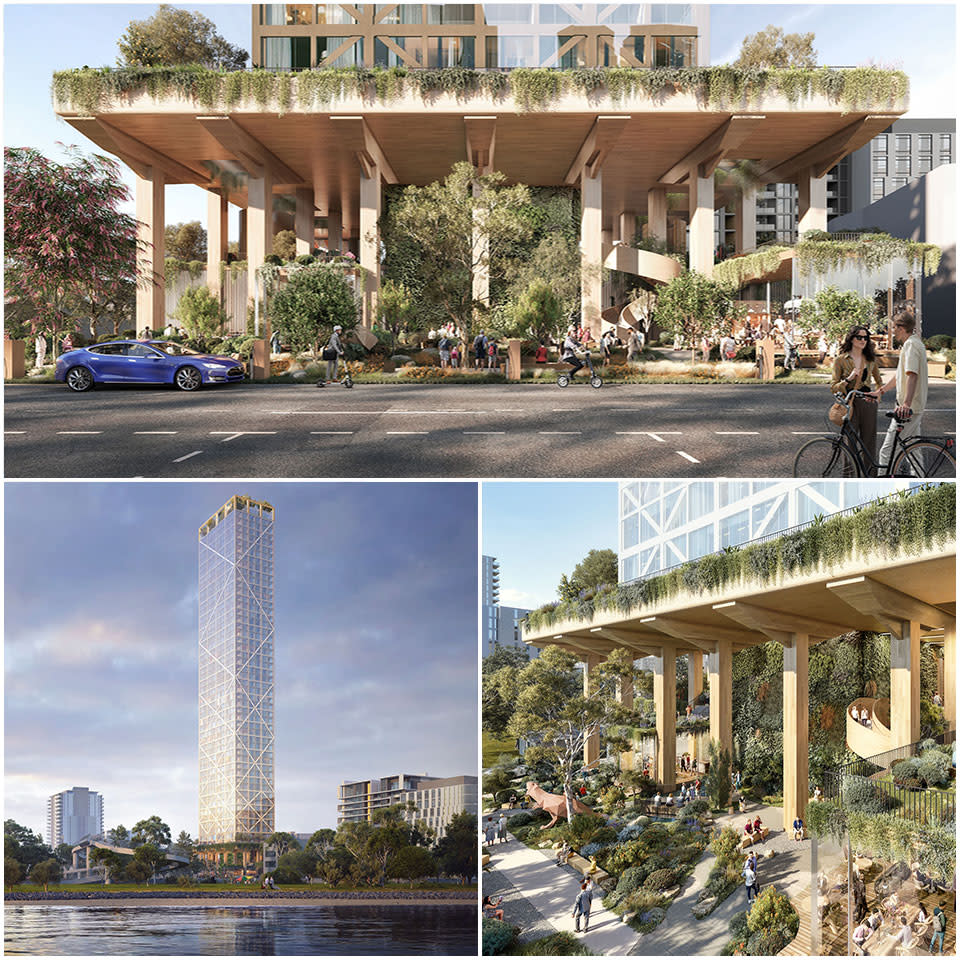Resources
Newsletter
Stay up to date and with the latest news, projects, deals and features.
Subscribe
The tallest timber building in the world will rise in Perth, if approved, after a $350-million development application was lodged by Melbourne’s Grange Development.
The developer has submitted plans with the City of South Perth for a 50-storey hybrid timber tower comprising 245 apartments at 6 Charles Street.
At a height of almost 183 metres, the development, to be known as C6, will lay claim to be the tallest timber building in the world, outreaching Atlassian’s approved skyscraper in Sydney’s Tech Central precinct by three metres.
The tower will offer apartments in one-, two-, three- and four-bedroom configurations and offer 18sq m of communal space per apartment.
Grange Development managing director James Dibble said that the rapidly shifting climate was the main driver behind the carbon-negative building.
“The built environment is one of the three major drivers of catastrophic climate change, alongside transport and agriculture,” Dibble said.
“With promising technological advances in both the transport and agriculture industries now working towards drastically reducing global carbon footprints, the property industry is lagging dangerously behind.”
The building will also be topped with a 500sq m edible garden, dining and entertainment space, and 1600sq m of communal wellness amenity.
Designed by architecture firm Elenberg Fraser, the tower will be built from cross-laminated timber (CLT), and glue-laminated timber, or glulam.
The innovative materials have the structural strength of traditional methods using concrete and steel.
“Timber as a building material has been around for centuries, but only recently has mass timber construction and fabrication methods made it a viable option en masse,” Dibble said.
“[The proposal] represents the future of what is possible, except we will deliver it now.”
Buildings made from engineered timber have a significantly lower carbon footprint than other buildings during construction and subsequent operation.
Construction of the building’s core will sequester over 10.5 million kilograms of carbon dioxide compared to a traditional concrete structure of similar scale.

According to Grange, all the necessary timber, 7400 cubic metres, required to build the apartment floors, columns and beams will be able to be regrown from just 580 seeds.
Supporting the building’s carbon negative status will be an embedded power network harnessed through solar and wind technologies, along with on-site food production, waste management and biophilic vertical landscapes.
The building will also provide its on-site energy production to residents to allow for a complete electric vehicle solution that will totally remove the need for fossil fuel-powered cars.
Grange has a current portfolio of circa 7000 dwellings across land, medium-density and high-density worth a total gross realisation value in excess of $2.5 billion.
Its latest project in Perth will be one of the most significant for timber—the use of which in office buildings, apartments towers and other facilities is gaining ground across the country.
According to the latest IPCC report, keeping global warming to less than 1.5 per cent is increasingly unlikely and that a range of between 2 and 3 per cent is most probable.
Thousands of scientists and government reviewers have agreed that limiting global temperature rise to no more than 1.5°C is required to avoid the worst climate impacts and maintain a livable climate.
Dibble said Grange would now be committed to an open source sharing of the project’s research, design and construction documentation, to encourage other developers to incorporate, evolve and further progress the building’s methodology across other projects.
“Steel and concrete are some of the most energy-dense materials in the world to produce and at the moment the industry relies on it,” Dibble said.
“If we can accelerate a paradigm shift into the use of more renewable building materials such as mass timber in a hybrid nature and see even 10, 15 or 20 per cent of future projects use mass timber in their construction in the next few years, we will have succeeded.
“At the moment that figure is almost zero. If nothing changes, nothing changes.”